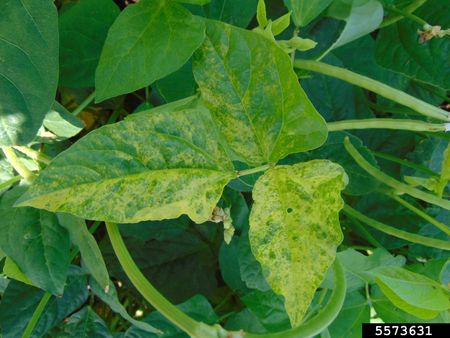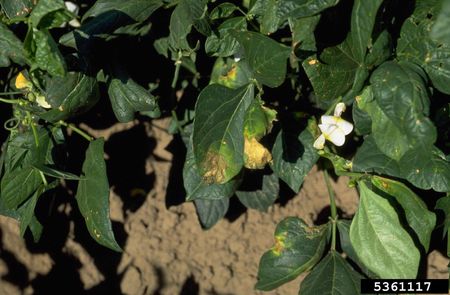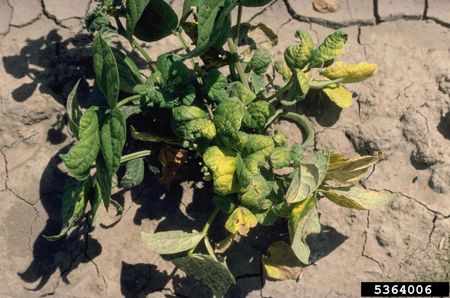Cowpea Curculio Management – Information About Cowpea Curculio Damage


Cowpeas, or black-eyed peas, have long been a garden staple across the southeastern United States. Grown for its taste, and valued for its nitrogen fixing properties, this heat-tolerant legume is a great choice for even the harshest growing conditions. Though the fast-maturing plants require minimal care, some pests could drastically impact yields. Knowing the signs of one such nuisance, cowpea curculio, will ensure that gardeners are better able to manage damage done to their plantings.
Signs of Cowpea Curculio
Cowpea curculio insects are a destructive type of weevil that is most commonly found on cowpeas. While adult cowpea curculio damage plants as they feed, further damage is done when larvae are hatched and begin to feed inside the developing cowpea pods, leading to decreased yields. Cowpea curculio damage may not be immediately noticeable. Most often, gardeners and large-scale growers will notice eaten sections or indentations in the cowpea pods. The presence of these indentations are usually signs that the weevils are not only present but may have already started the process of laying eggs on the plants.
Cowpea Curculio Management
Due to the nature of this pest, it is important that growers are able to detect these weevils as early in the season as possible to prevent life cycle completion and, thus, find success in controlling cowpea curculio. In recent years, traps have been developed as a means for commercial growers to more easily detect the arrival and presence of the weevils. While some categories of food-safe pesticides have been shown to control moderate infestations of the cowpea curculio, demonstrated resistance to sprays has made it very difficult to control damage to crops in areas when many insects are present. One of the best ways to manage cowpea curculio in the garden is by taking necessary steps to prevent infestation. Like many garden insects, these weevils spend the winter in the ground. Thoroughly clearing the garden of any debris is an excellent way to discourage this process. Additionally, growers will benefit from consistent crop rotation, as it has been found that the pest seldom flies. Another legume, snap beans, may also be targeted by this insect. Awareness of this pest will assist gardeners as they plan their yearly gardens. By keeping a keen eye, and by choosing varieties which demonstrate more resistance to the weevils (such as those with thick pod walls), gardeners and large-scale growers can help reduce damages done throughout the growing season.
Gardening tips, videos, info and more delivered right to your inbox!
Sign up for the Gardening Know How newsletter today and receive a free copy of our e-book "How to Grow Delicious Tomatoes".

Tonya Barnett has been gardening for 13 years. Flowers are her passion. She has transformed her backyard into a cut flower garden, which she regularly chronicles on her YouTube channel http://www.youtube.com/@tonyawiththeflowers.
-
 How To Grow Strawberries From A Strawberry: All You Need To Cultivate Yummy Fruits
How To Grow Strawberries From A Strawberry: All You Need To Cultivate Yummy FruitsYou may know how to grow strawberries from small plants or runners – but what about growing from the fruit? Here we show you how to grow strawberries from a strawberry
By Mary Ellen Ellis
-
 Best Tomatoes For Containers: 10 Tastiest Varieties For Plentiful Produce In Compact Areas
Best Tomatoes For Containers: 10 Tastiest Varieties For Plentiful Produce In Compact AreasThese are the best tomatoes for containers that prove you don't need to have a large space or elaborate garden to grow delicious produce.
By Bonnie L. Grant
-
 Southern Pea Mosaic Virus: Learn About Mosaic Virus Of Southern Pea Plants
Southern Pea Mosaic Virus: Learn About Mosaic Virus Of Southern Pea PlantsSouthern peas may be afflicted by a number of diseases, like southern pea mosaic virus. What are the symptoms of mosaic virus of southern peas? Learn how to identify southern peas with mosaic virus and control the virus in this article.
By Amy Grant
-
 Burnt Southern Pea Leaves: Treating Southern Peas With Burnt Leaves
Burnt Southern Pea Leaves: Treating Southern Peas With Burnt LeavesSince the vegetables thrive in high heat regions, the cause of leaf burn on southern peas is rarely sunscald. Some investigation into the most common causes of leaf burn can help diagnose and treat the condition. Click here for more info on southern pea leaf burn.
By Bonnie L. Grant
-
Southern Pea Cotton Root Rot – Treating Texas Root Rot Of Cowpeas
Are you growing cowpeas or southern peas? If so, you'll want to know about Phymatotrichum root rot, also known as cotton root rot. For information about cowpea cotton root rot and its control, this article will help.
By Teo Spengler
-
Southern Pea Root Knot Nematode: Managing Root Knot Nematodes On Southern Peas
Southern peas with root-knot nematodes can suffer in multiple ways. The pathogen can damage the plants enough to reduce the harvest, but it can also make your peas vulnerable to other infections, including fungal and bacterial diseases. Learn more here.
By Mary Ellen Ellis
-
Southern Pea Pod Blight Control: Treating Pod Blight On Southern Peas
Southern peas seem to have a different name depending on what section of the country they're grown. Whether you call them cowpeas, field peas, crowder peas, or black-eyed peas, they are all susceptible to wet rot. Learn more in this article.
By Amy Grant
-
 Cowpea Curly Top Virus – Learn To Manage Southern Peas With Curly Top Virus
Cowpea Curly Top Virus – Learn To Manage Southern Peas With Curly Top VirusSouthern pea curly top virus can leave your pea crop damaged if you don?t manage it. Transmitted by an insect, this virus attacks several types of garden vegetables and in southern pea or cowpeas, it can severely limit the year?s harvest. Learn more in this article.
By Mary Ellen Ellis
-
 Cowpea Leaf Spot Diseases: Managing Southern Peas With Leaf Spots
Cowpea Leaf Spot Diseases: Managing Southern Peas With Leaf SpotsLeaf spots of cowpea, which can also affect lima beans and other legumes, causes significant crop loss in the southern United States. However, the fungus isn?t limited to the southern states and can also occur in other areas. Learn more here.
By Mary H. Dyer
-
Southern Pea Powdery Mildew Control – Treating Southern Peas With Powdery Mildew
It is important to recognize the symptoms of southern peas with powdery mildew in order to come up with a management plan before the problem becomes too severe. The following article contains information regarding southern pea powdery mildew control.
By Amy Grant